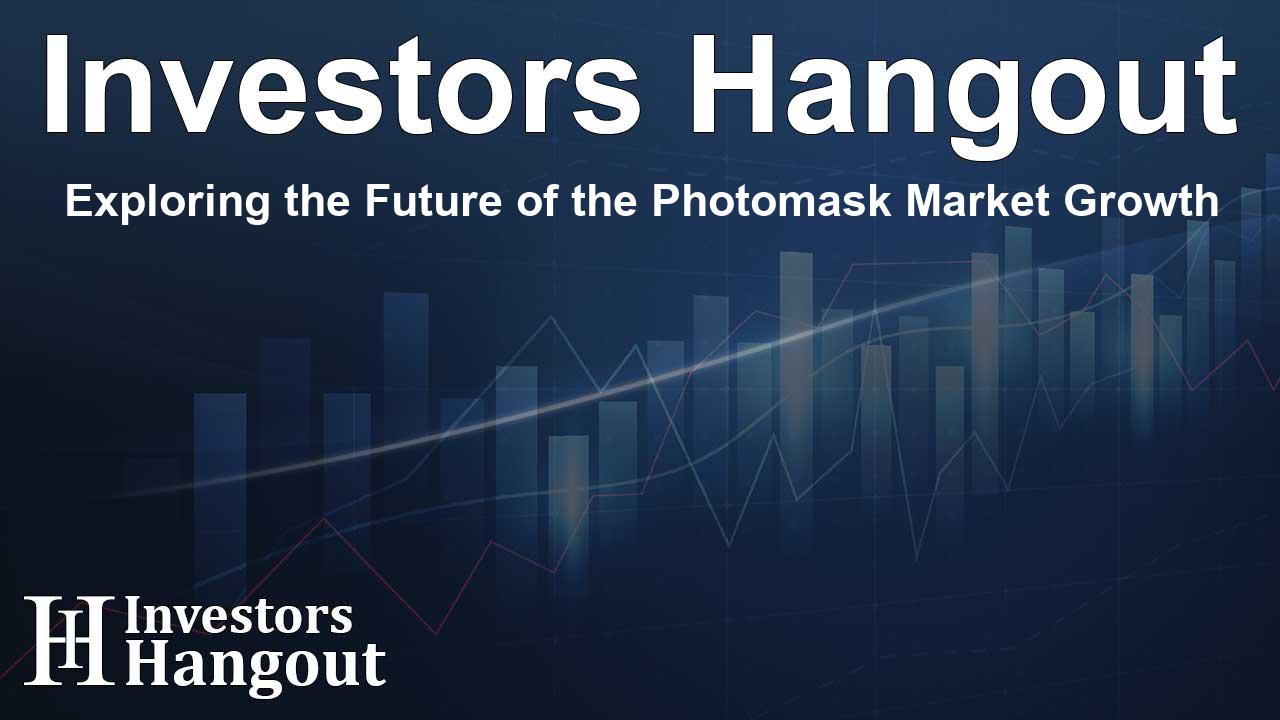Exploring the Future of the Photomask Market Growth

Photomask Market Size & Growth Insights
Austin – The photomask market is witnessing substantial growth, driven by advancements in semiconductor technologies. Valued at USD 5.15 billion recently, it is projected to reach USD 7.22 billion, representing a compound annual growth rate (CAGR) of 4.31% from 2025 to 2032.
Dynamics of EUV Lithography in Photomask Demand
The growth trajectory of photomasks is particularly bolstered by the increasing demand for advanced semiconductor nodes and cutting-edge lithography technologies, such as EUV (Extreme Ultraviolet) and High-NA EUV. The shift toward building chips smaller than 2nm has amplified the need for photomasks capable of ultra-high fidelity. This demand spans several markets, including artificial intelligence (AI), 5G networks, automotive technology, and consumer electronics, all necessitating compact yet energy-efficient chips.
In contrast to traditional photomasks, modern EUV masks, operating at 13.5nm, utilize reflective multi-layer mirrors that require precise etching control, defect management, and uniform patterning. Equipment designed for this process, like the advanced reticle etching systems developed by industry leaders, is reshaping the landscape of photomask production. These systems are critical for enhancing the yield and performance of semiconductors, driving a more competitive atmosphere and fostering collaboration in research and development.
Key Players in the Photomask Industry
Several key players lead the photomask market, actively contributing to its innovation and growth. Companies such as Applied Materials Inc., KLA Corporation, and Photronics Inc., along with others like HOYA Corporation and Infinite Graphics, are pivotal in advancing photomask technologies. These companies provide a range of products essential for the production of high-performing semiconductors, catering to the diverse needs of various applications, including displays and optical devices.
Market Segmentation and Strategic Insights
The photomask market can be segmented by product, application, technology, and end use. Each segment plays a crucial role in driving overall growth:
By Product
The reticle segment is significant, accounting for around 52% of the photomask market recently. It is crucial for precision in semiconductor lithography and is expected to experience a CAGR of 4.45% from 2025 to 2032. This growth is largely driven by advanced node adoption and ongoing chip miniaturization.
By Application
Display applications hold a 48% share of the photomask market, driven by the demand for high-resolution panels in consumer electronics. The discrete components segment is anticipated to grow rapidly, fueled by applications in automotive technology and telecommunications.
By Technology
Optical lithography continues to dominate the photomask realm, comprising nearly 60% of the market, thanks to its cost-effectiveness and reliability for high-volume productions. However, EUV lithography is quickly gaining ground, forecasted to grow at a CAGR of 8.22% as it meets the demands of sub-5nm manufacturing.
By End Use
Consumer electronics are a major driver in the photomask market, representing about 46% of market share due to the continual demand for smartphones and smart devices. The healthcare sector is projected to see substantial growth, with a CAGR of 10.93% as demand for miniaturized medical devices increases.
Regional Insights: Asia Pacific and North America Lead
In terms of geographical distribution, the Asia Pacific region is leading the photomask market with a 44% revenue share, bolstered by a robust semiconductor manufacturing framework across Taiwan, South Korea, and China. In contrast, North America is expected to experience the fastest growth rate, attributed to the CHIPS Act and the increasing adoption of advanced EUV technologies.
Europe also aims to enhance its position in semiconductor R&D and advanced lithography as strategic initiatives are put in place, promising further advancements in the photomask sector.
Frequently Asked Questions
What is the projected size of the photomask market by 2032?
The photomask market is projected to reach USD 7.22 billion by 2032.
Which segment is expected to grow the fastest?
The healthcare segment is anticipated to grow at the highest CAGR of 10.93% driven by the demand for miniaturized medical devices.
Who are the leading players in the photomask market?
Key players include Applied Materials Inc., KLA Corporation, and Photronics Inc., among others.
What technologies are driving the photomask market?
Technologies such as EUV lithography and optical lithography are significantly impacting market growth.
How does the Asia Pacific region influence the photomask market?
Asia Pacific dominates the market with a 44% revenue share due to its strong semiconductor manufacturing in countries like Taiwan and South Korea.
About The Author
Contact Hannah Lewis privately here. Or send an email with ATTN: Hannah Lewis as the subject to contact@investorshangout.com.
About Investors Hangout
Investors Hangout is a leading online stock forum for financial discussion and learning, offering a wide range of free tools and resources. It draws in traders of all levels, who exchange market knowledge, investigate trading tactics, and keep an eye on industry developments in real time. Featuring financial articles, stock message boards, quotes, charts, company profiles, and live news updates. Through cooperative learning and a wealth of informational resources, it helps users from novices creating their first portfolios to experts honing their techniques. Join Investors Hangout today: https://investorshangout.com/
The content of this article is based on factual, publicly available information and does not represent legal, financial, or investment advice. Investors Hangout does not offer financial advice, and the author is not a licensed financial advisor. Consult a qualified advisor before making any financial or investment decisions based on this article. This article should not be considered advice to purchase, sell, or hold any securities or other investments. If any of the material provided here is inaccurate, please contact us for corrections.
